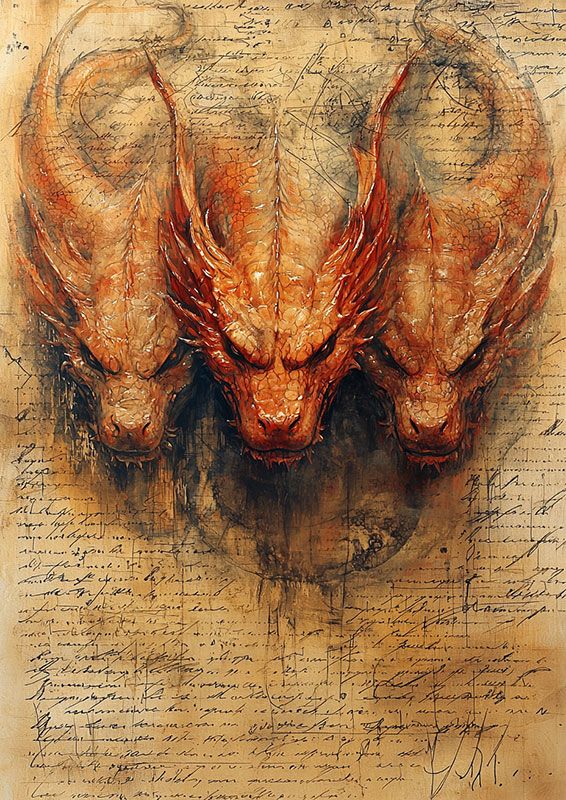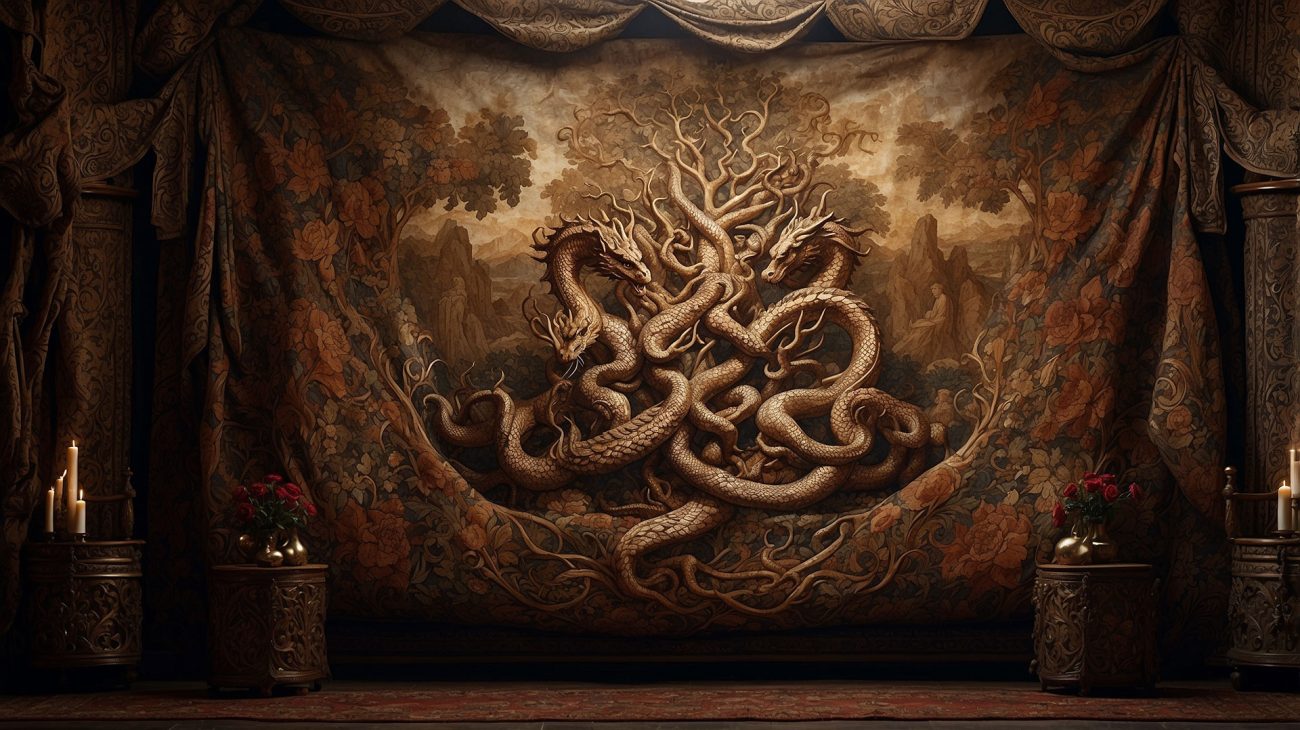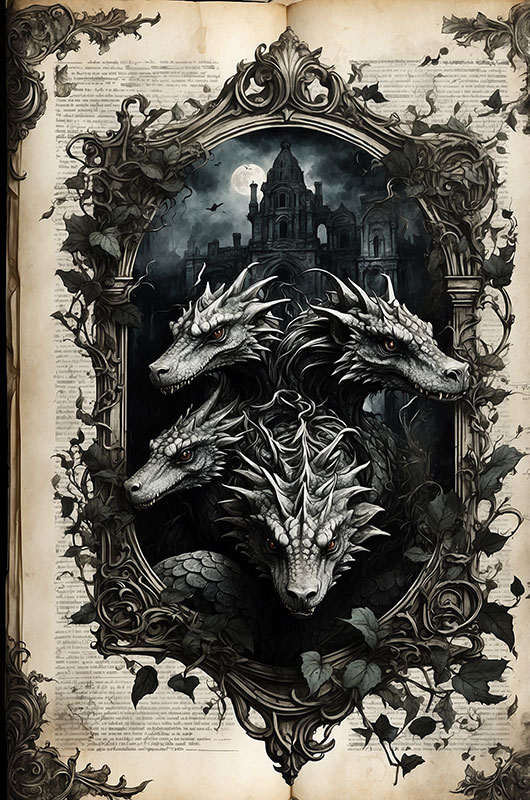The Hydra
Exploring the Enigma of the Hydra
In the depths of ancient lore, the Hydra reigns as a symbol of a formidable challenge. This multi-headed serpent, born from the murky waters of the swamp, has enchanted and terrified civilizations alike. Legends whisper of its ability to regenerate, making it a creature of both wonder and fear.
This remarkable creature embodies multi-headed chaos. Each head that returns is a reminder that powerful forces resist final defeat, yet renewal is possible if the right strategy is found.
Unravel the Enigma
Powers that Bewitch the Mind
Regeneration
The Hydra, immortal in essence, reclaims its form with every severed limb. Each descent into demise is merely a step toward rebirth.
Venomous Breath
A breath laden with deadly tales, each exhalation sends foes into a slumber from which few emerge. Beware the intoxicating allure.
Mythical Resilience
Surviving the ages, each tale spun weaves strength into its scales. Through trials by fire and flood, the Hydra embodies endurance.
Enigmatic Allure
Drawn into the mysteries of the Hydra, each glance ignites curiosity. What lies beneath the scales, and what secrets do they guard?
Hydra: regeneration and the persistence of evil
Imagine a creature that doesn’t just lose a head but grows two in its place. The Hydra, a serpent-like entity from ancient Greek myth, sits at the crossroads of life and death. It binds chaos and renewal into one stubborn image. Destruction followed by rebirth. Fear that spurs resilience. A constant tug-of-war that never ends. This is not just a monster story; it’s a map of what humans endure and become.
Hydra as a Primordial Regenerative Symbol
The Hydra stands as a timeless emblem of cycles under the surface. Its very existence points to a world where endings feed new starts. The image invites us to notice how renewal is never clean or simple. It comes with risk, friction, and a stubborn sense that growth requires contact with what hurts.
The Symbolic Multiplicity of Hydra’s Heads
The Hydra, with its many heads, offers a clear lens on the self. Carl Jung viewed these heads as an archetype representing the fragmentation within us all, with each head symbolizing a different desire, thought, or emotion. The creature’s regenerative ability, where severing one head prompts two more to grow, demonstrates how the psyche reshuffles and reshapes itself, proving that adaptability and change are ongoing processes. This regeneration through severed connections highlights that growth often arises from conflict and risk, akin to breaking habits or testing beliefs. Renewal, though not painless, ultimately makes us more capable of facing future challenges.

The Battle of Heracles and the Hydra
In the age when gods still walked among mortals, there lived near the marshes of Lerna a monstrous serpent called the Hydra. Born of Typhon and Echidna, it was said to possess nine heads, though some poets claimed fifty or a hundred, and its breath alone was poison. From its lair in the dark swamp, the Hydra would crawl forth at night to devour men and beasts alike, leaving the land barren and fearful. So terrible was its presence that even the reeds along the water’s edge were said to wither at its hiss.
When King Eurystheus commanded Heracles to perform twelve impossible labors to atone for his sins, the slaying of the Hydra was named the second task. It was not only strength that would be tested, but cunning—for the Hydra was no ordinary beast.
Heracles set out for Lerna under a burning sky, carrying only his sickle and club, and driving a chariot drawn by horses. At the edge of the swamp, he covered his mouth and nose against the foul vapors that rose from the mud. Knowing that the Hydra would not leave its den willingly, he shot flaming arrows into the darkness until the monster stirred.
From the mire came the sound of hissing, and soon the Hydra emerged—its many heads writhing like a nest of serpents, each with eyes burning like coals. The hero advanced, swinging his club, and crushed one of the heads with a single blow.
But from the bleeding stump, two new heads grew in its place, larger and more furious than before. Wherever Heracles struck, the Hydra multiplied.
Realizing brute force would not suffice, Heracles called out for aid from his faithful nephew Iolaus, who had accompanied him to witness the feat. As Heracles continued to battle, Iolaus fetched a torch from the chariot and returned to his uncle’s side. Now, when Heracles smashed a head from its neck, Iolaus pressed the blazing torch to the wound, searing the flesh shut before new heads could grow. One by one, the heads fell and burned, and the stench of their black smoke filled the marsh.
At last only the central head remained, the Hydra’s immortal one, which no blade or fire could harm. Heracles grasped it with his bare hands—its fangs dripping venom—and crushed it under his mighty foot. Then he cut it off and buried it deep beneath a heavy rock, ensuring it would never rise again.
When the beast was dead, Heracles dipped his arrows in the Hydra’s blood, which was so venomous that even a scratch from those weapons would bring instant death. Thus armed, the hero returned to Eurystheus, who, out of envy and fear, refused to count the labor, saying that Heracles had received help from Iolaus. But the tale of the Hydra would live on—not merely as the story of a monster’s defeat, but as a parable of endless struggle and regeneration: when one head is cut, two more arise.
In later ages, poets and philosophers saw in the Hydra a symbol of chaos and corruption, the evils that multiply when attacked without wisdom. For Heracles’ fire was not just a weapon—it was enlightenment triumphing over darkness.

Questions
Journey into the world of the Hydra and their mysteries.

The Hydra is a gigantic multi-headed serpent from Greek mythology that guarded the swamps of Lerna. Each time one of its heads was cut off, two more would grow in its place. It was ultimately slain by the hero Heracles as one of his Twelve Labors.
The Hydra’s regenerative power symbolized the unstoppable nature of evil and the futility of facing a problem with brute force alone. Its magic caused every severed head to sprout two new ones until Heracles burned the wounds to stop the regrowth.
Heracles (Hercules in Roman myth) killed the Hydra with the help of his nephew Iolaus. As Heracles cut off each head, Iolaus cauterized the necks with a burning torch so the heads could not regrow, allowing the hero to finally defeat the monster.
The Hydra often represents chaos, corruption, or a problem that multiplies when attacked. In spiritual and psychological interpretations, it also embodies resilience, regeneration, and the need for wisdom rather than violence to overcome challenges.
Myths place the Hydra in the marshes of Lerna, a coastal region in the Argolid of Greece. The swamp was believed to be a gateway to the Underworld, making the Hydra both a guardian and a symbol of death’s persistence.
The Hydra appears widely in modern stories—from fantasy novels and role-playing games to the Marvel universe’s villainous organization “HYDRA.” It remains a metaphor for complex problems that seem to regenerate whenever one part is defeated.